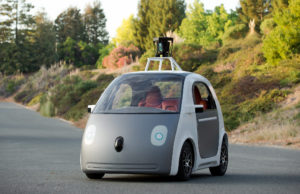There’s an automation wave coming. Preparation will determine whether we sink or swim.
Zachary C Power
Kicker

Shorter lines at fast food joints. Self-driving cars. Back-flipping robots. There’s a lot to like about automation, but beneath the convenience may lie unseen consequences.
Automation in the form of robots has already taken over the manufacturing industry and is beginning to make an impact in the service industry.
Self-serve kiosks have been appearing locally at locations such as McDonalds and the Shopper Drug Mart on Torbay Road. With the development of self-driving technology, one could expect to see a similar shift in the truck-driving and taxi professions.
A Google search for “technological anxiety” will yield more than 42 million results. It is a very real thing that affects a wide range of people. But it’s also nothing new.
With every technological leap forward, there has always been push-back from those who felt threatened. Most famously, the Luddites were notoriously anti-technology during the industrial revolution in Britain. They rejected technology that threatened their livelihood, and destroyed or sabotaged machines.
The modernization of agriculture saw similar anxieties. New technologies and new techniques allowed farms to produce more crops with less labour. Many rural people were displaced and found themselves living in urban areas that were unfamiliar to them. It wasn’t the end of the world, just the end of the world as they knew it.
“With very kind of technological change you will have some people lose out, but there can be compensating gains elsewhere.”
What links these two shifts, apart from the anxieties, is that the world kept turning. When one area would falter, another would rise. Lynn Gambin, assistant professor of economics at Memorial University, describes it as a winners-and-losers type scenario.
“With very kind of technological change you will have some people lose out, but there can be compensating gains elsewhere,” said Gambin.
The losers in this case, according to Gambin, are workers whose jobs consist largely of repetitive tasks: labourers, custodians, cashiers and the like. Unfortunately, such workers make up a large portion of the St. John’s labour force. Gambin says roughly 45 per cent of all jobs in the St. John’s area could, in theory, be automated. The winners will be those whose jobs require a more human touch: hairdressers, anyone in the tourism industry or elder care professionals, for example.
With Newfoundland and Labrador’s unique demographic situation (we’re old, very old), there’ll be a growing demand for elder care. The aging population was a factor that Dr. Doug May of Memorial University cited as possibly being in Newfoundland’s favour when it comes to the shift into an automated economy. With people aging-out of the workforce quicker than they are aging-in, automation will be essential when it comes to picking up the slack to ensure a growing economy.
With any major shift, it’s best to be proactive rather than reactive. Gambin stresses the importance of policy when it comes to making a smooth transition into an automated world. She suggests improved access to education and training for those in unskilled and low-skilled jobs would be key. In addition, Gambin says it’s important that the government look toward the horizon and invest in areas that will see major growth as automated technologies becomes more and more commonplace.




Be the first to comment